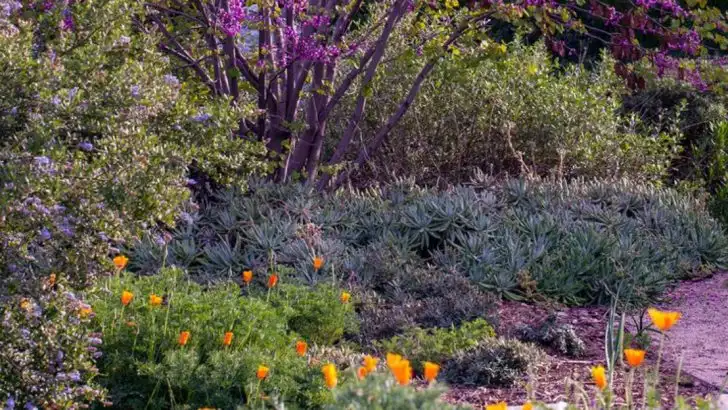Some plants are nothing but trouble in a pretty pot. You stroll into the garden center, fall for a glossy tag and a cheerful bloom, and next thing you know—your backyard’s a mess, your wallet’s lighter, and that “perfect” plant is wilting into disappointment. Don’t let good soil go to waste on garden center heartbreakers. These duds might look charming in their nursery pots, but they bring drama, pests, or zero payoff once planted. Save yourself the hassle. Skip the usual suspects and go for tried-and-true winners that actually thrive, not just survive. Your future self (and your flowerbeds) will thank you.
Bamboo
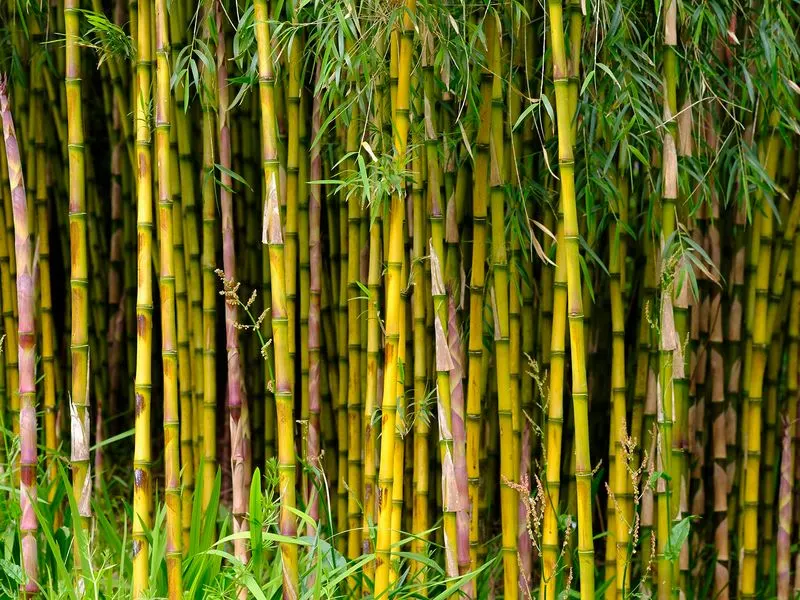
Bamboo might seem like an alluring choice for a zen garden. However, its rapid growth can quickly become uncontrollable, making it an unwelcome guest in your yard. This plant spreads aggressively, often encroaching on neighboring areas. Its invasive nature can lead to costly removal procedures. Consider opting for clumping bamboo varieties if you must have it, as they grow in a more contained manner. Alternatively, native grasses can provide a similar aesthetic without the risk of garden domination. Bamboo’s appeal lies in its fast growth, yet that very trait turns it into a garden menace.
English Ivy
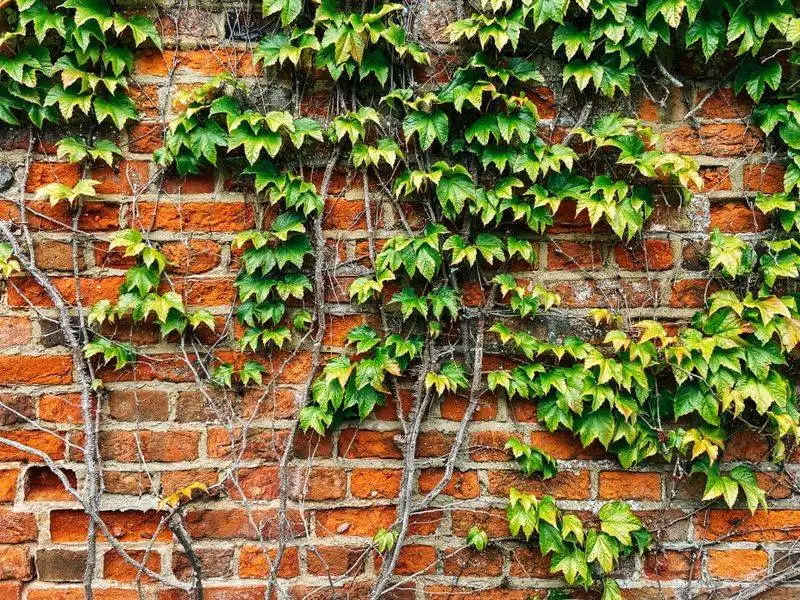
English ivy’s charm and ability to cover unsightly walls might lure you in. Yet, this plant can cause structural damage by creeping into cracks and weakening them over time. Its tenacity allows it to thrive in various conditions, often outcompeting local flora. While it provides aesthetic appeal, the long-term consequences may outweigh its initial attraction. Alternatively, try climbing hydrangeas for a more garden-friendly climbing plant that offers beautiful blooms and less risk to structures. English ivy’s allure is undeniable, but its potential for harm calls for caution.
Mint
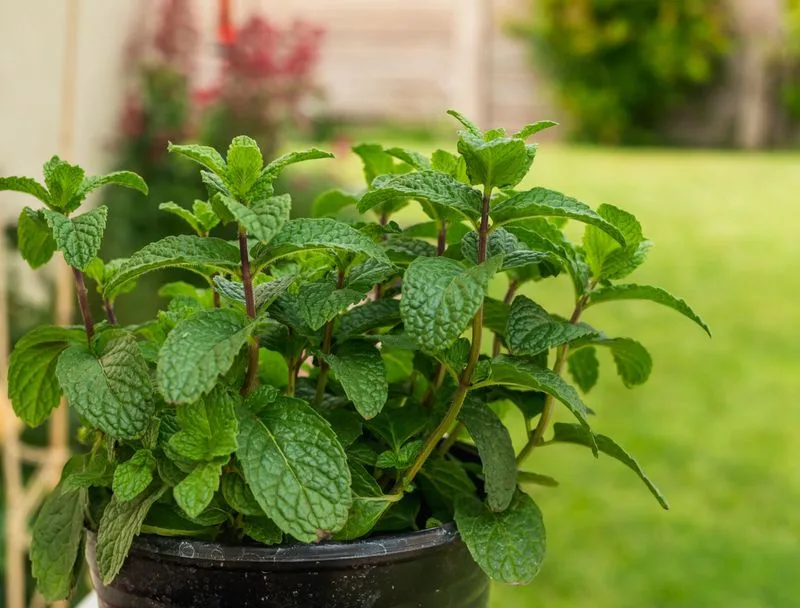
Mint is loved for its refreshing scent and culinary uses, yet it can swiftly overrun garden beds. Planting mint directly in the ground may lead to it spreading uncontrollably, as it sends out runners that quickly establish new plants. To enjoy mint without the invasion, grow it in containers where its growth can be controlled. This way, you can savor its delightful flavor without worrying about it taking over your garden space. Mint’s adaptability is both its strength and weakness, requiring mindful cultivation for best results.
Japanese Knotweed
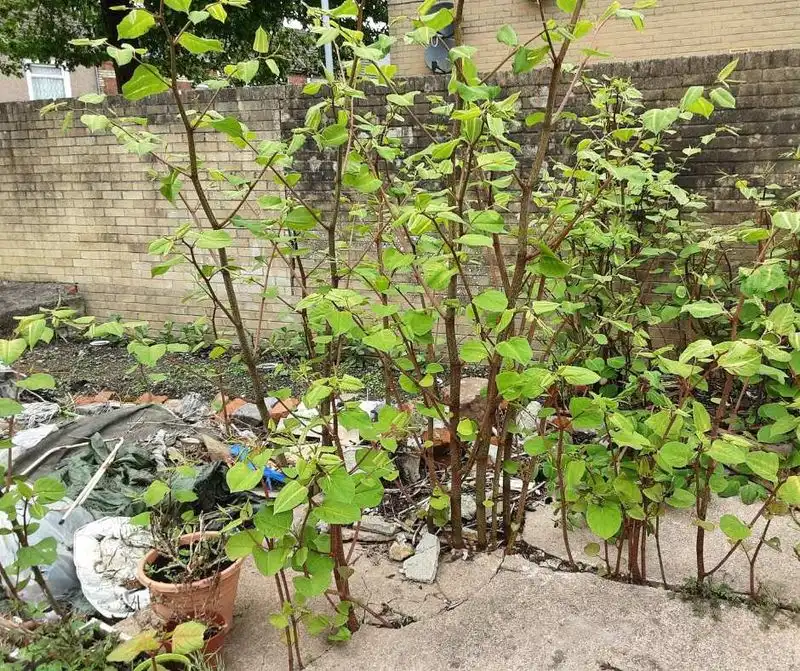
Japanese knotweed’s rapid growth and resilience make it a nightmare for gardeners. Its roots can cause significant damage to foundations and pavements. This invasive plant is difficult to eradicate once established, often requiring professional removal services. Avoid planting it at all costs. Instead, consider native shrubs that offer visual appeal without the destructive tendencies. Japanese knotweed may seem like an appealing ornamental, but its aggressive nature and potential for harm make it a risky choice for any garden.
Eucalyptus

Eucalyptus trees are beloved for their aromatic leaves and towering presence. Yet, they can pose significant challenges for gardeners. Their rapid growth and high water usage may deplete surrounding soil moisture, affecting nearby plants. Additionally, eucalyptus leaves contain oils that can suppress the growth of other plants beneath them. Instead, consider planting native trees that provide shade without the ecological impact. Eucalyptus might seem like a unique choice, but its environmental demands make it unsuitable for many gardens.
Wisteria
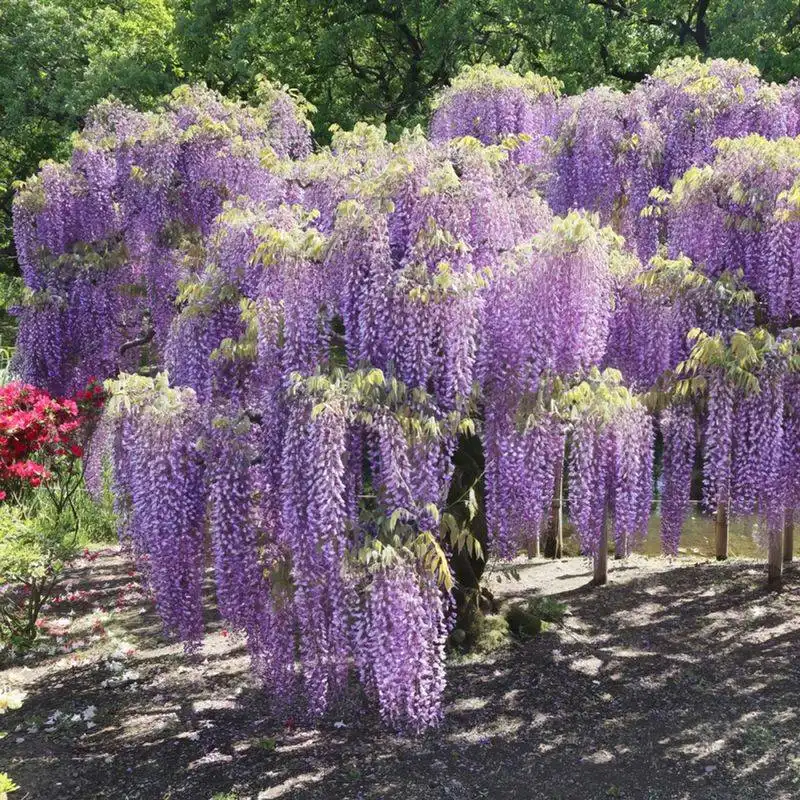
Wisteria’s breathtaking blooms add a touch of romance to any garden. However, its aggressive growth can lead to structural damage as it climbs and twists around supports. This plant requires diligent pruning to keep it in check, making it a high-maintenance choice. Opt for less invasive climbing plants that offer similar aesthetic appeal without the risk of damage. Wisteria’s beauty is undeniable, yet its demanding nature and potential for chaos make it a daunting choice for the average gardener.
Privet
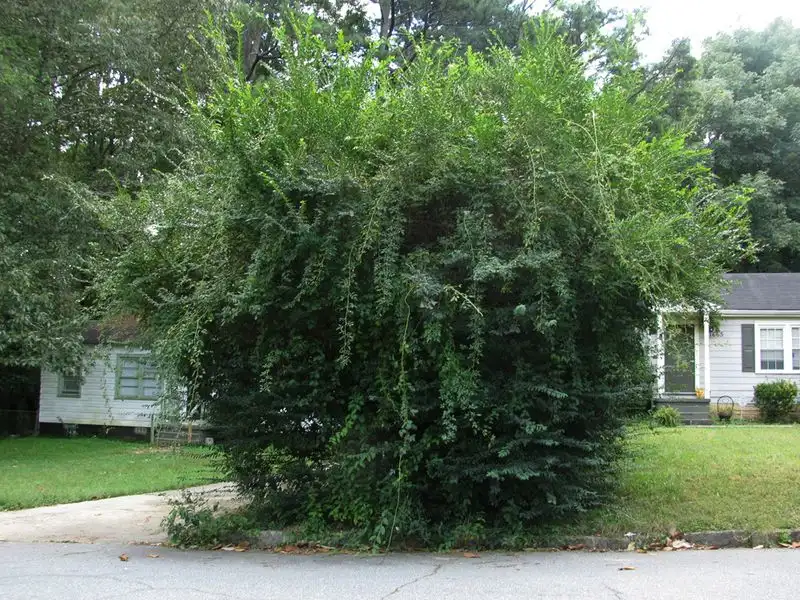
Privet hedges offer privacy and green boundaries, yet they can become hugely invasive. This plant tends to spread quickly, often escaping cultivation and disrupting local ecosystems. Its fast growth necessitates frequent pruning, which can be burdensome. Consider native shrubs that provide similar screening benefits without the invasive tendency. Although privet is a popular choice for garden hedges, its propensity to overrun areas makes it a challenging plant to manage responsibly.
Norway Maple
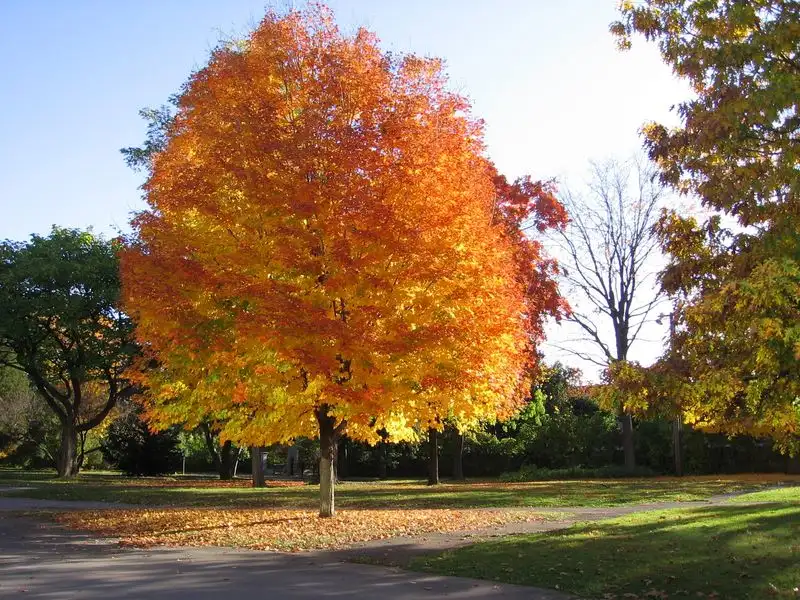
The Norway maple is a common street tree with broad leaves providing ample shade. However, its dense canopy and shallow roots can hinder the growth of underplantings. Additionally, its seeds are prolific, spreading far and wide, often at the expense of native flora. Consider planting native trees that support local biodiversity and offer similar shade without ecological downsides. Norway maple’s robust growth is appealing, yet its impact on garden biodiversity is a concern for eco-conscious gardeners.
Russian Olive
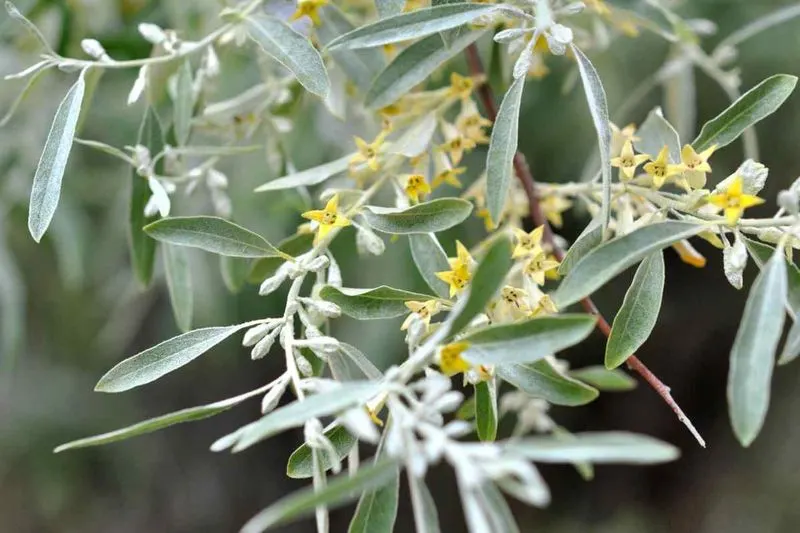
The Russian olive tree entices with its silvery foliage and resilience. Unfortunately, it invades natural habitats, outcompeting native plants and altering ecosystems. Its seeds are spread by birds, making it challenging to control its propagation. Instead, opt for native trees that support local wildlife and contribute to ecological balance. Russian olive’s visual appeal is undeniable, but its invasive tendencies can lead to ecological disruption, making it a risky addition to any garden.
Autumn Olive
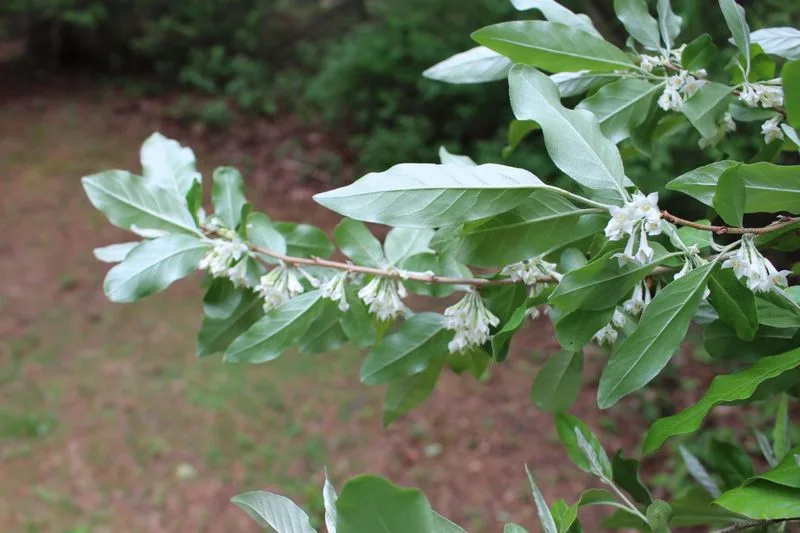
Autumn olive is known for its bright red berries and ability to thrive in poor soil conditions. Yet, it spreads aggressively, outcompeting native plants and altering ecosystems. Its nitrogen-fixing capabilities can alter soil chemistry, impacting surrounding plant life. Opt for native berry-producing shrubs that support local wildlife without the invasive traits. While autumn olive’s resilience is attractive, its ecological impact requires careful consideration before introducing it to your garden.
Tree of Heaven
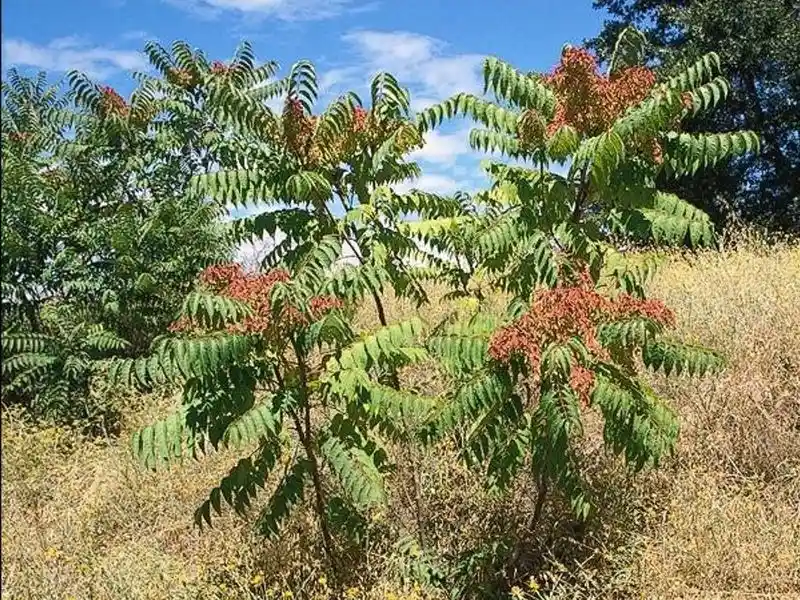
The tree of heaven earns its name with rapid growth and towering stature. However, it’s notorious for its aggressive nature, often outcompeting native vegetation and forming dense thickets. Its roots can damage infrastructure, making it a liability in urban gardens. Instead, consider planting native trees that offer similar shade and aesthetic without the invasive threats. The tree of heaven’s resilience is remarkable, yet its ecological impact and structural risks make it a challenging choice for gardeners.
Purple Loosestrife
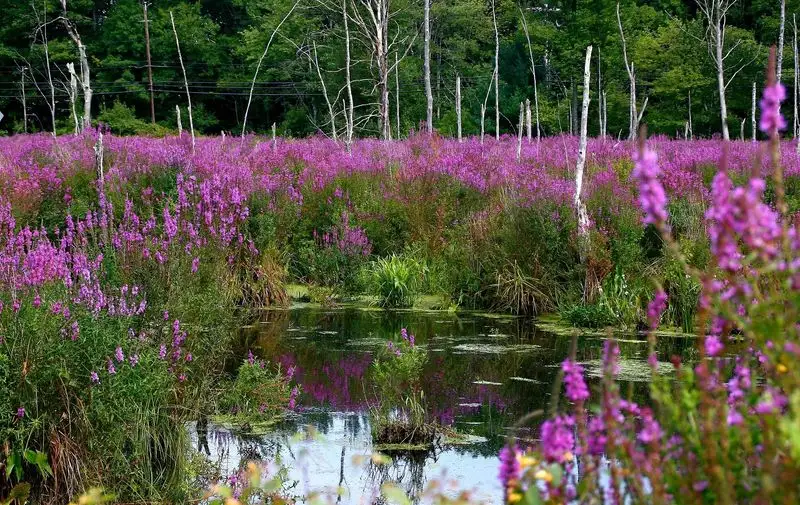
Purple loosestrife captivates with its vibrant purple flowers, making it a tempting choice for gardens. However, it is a prolific invader of wetlands, displacing native plants and disrupting ecosystems. Its seeds spread easily, leading to widespread ecological damage. Choose native wetland plants that offer visual appeal without the invasive characteristics. Purple loosestrife’s striking beauty is hard to resist, but its ecological consequences make it a risky addition to any garden.
Clumping Bamboo
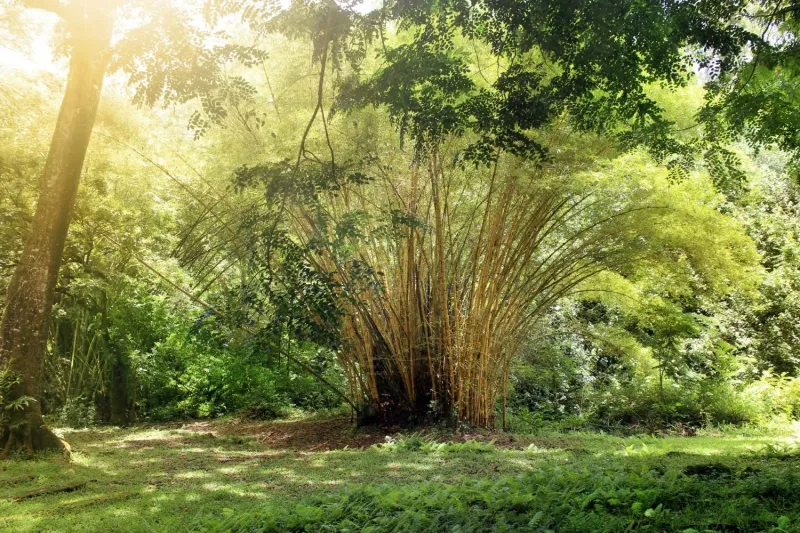
For those who love bamboo but fear its invasive tendencies, clumping bamboo offers a garden-friendly alternative. Unlike its notorious counterpart, clumping bamboo grows in tight clusters, making it easier to manage and less likely to overrun your garden. Its elegant appearance and soothing rustle in the breeze create a serene atmosphere without the need for constant control. Plant it as a focal point or hedge for privacy, and enjoy the beauty of bamboo without the chaos. Clumping bamboo’s restrained growth brings harmony to any garden setting.
Climbing Hydrangea

Climbing hydrangeas offer a beautiful and garden-friendly alternative to more aggressive climbers like wisteria. With its delicate white blooms and manageable growth, it’s a picturesque choice for adorning walls and trellises. Unlike more invasive counterparts, climbing hydrangeas won’t damage structures or require constant pruning, making them a low-maintenance option. These plants provide a charming and graceful aesthetic that enhances any outdoor space. Opt for climbing hydrangeas to enjoy the beauty of climbing plants without the hassle of overgrowth and structural concerns.
Native Grasses

Embrace the natural beauty of native grasses in your garden. These plants offer an eco-friendly alternative to invasive species like bamboo. With their diverse textures and colors, native grasses add dynamic movement and visual interest to any landscape. They support local wildlife and require minimal maintenance compared to more aggressive garden plants. Choose native grasses for a sustainable and harmonious garden that thrives in local conditions. Their subtle elegance and ecological benefits make them a wise choice for gardeners seeking both beauty and environmental responsibility.
Native Shrubs

Native shrubs provide a sustainable alternative to invasive options like Japanese knotweed and Russian olive. These plants offer lush foliage and seasonal interest while supporting local wildlife and ecosystems. Their adaptability to local conditions makes them low-maintenance and resilient. By choosing native shrubs, gardeners can enhance biodiversity and create a thriving habitat for birds and pollinators. These shrubs are an excellent choice for those looking to make environmentally conscious decisions while enjoying the beauty and functionality of their garden space.
Shade-Loving Natives
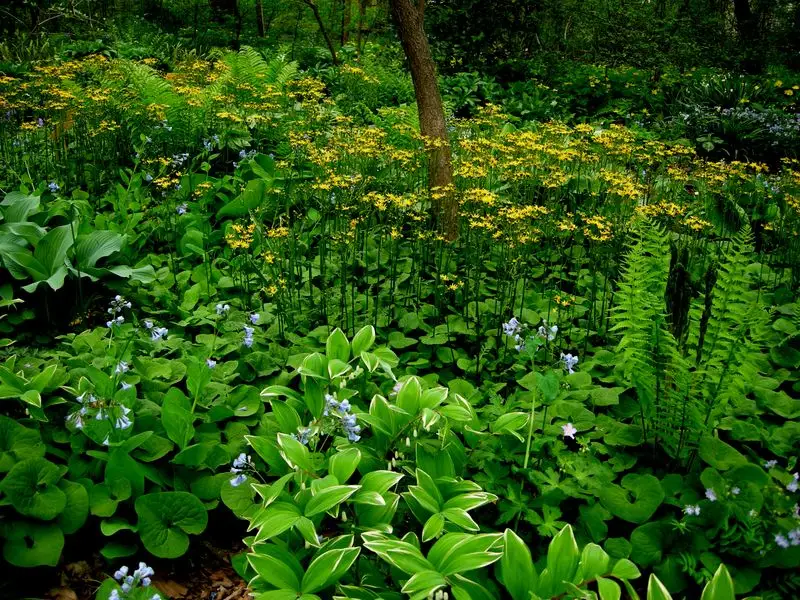
For gardens shaded by trees like the Norway maple, consider planting shade-loving native plants. These plants thrive in low-light conditions and enrich the garden with textures and colors that complement the dappled sunlight. They support local ecosystems and require less water and care than non-native options. Choose shade-loving natives for a lush, inviting garden that harmonizes with its surroundings. Their ability to flourish in challenging conditions makes them an ideal choice for eco-conscious gardeners seeking beauty and sustainability.
Native Trees
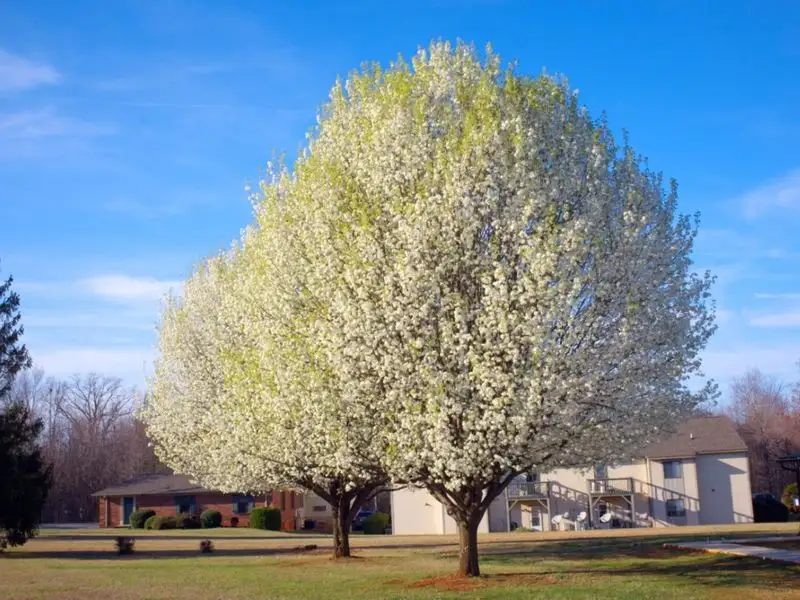
Native trees offer a responsible alternative to invasive species like the tree of heaven and eucalyptus. These trees provide shade, beauty, and ecological benefits, supporting local biodiversity and offering habitat for wildlife. Their roots stabilize soil and improve air quality, making them a valuable addition to any garden. By choosing native trees, gardeners contribute to environmental health while enjoying the timeless appeal of majestic foliage. These trees are a testament to the harmony between nature and mindful gardening, offering a legacy of beauty and ecological balance.
Non-Invasive Climbing Plants
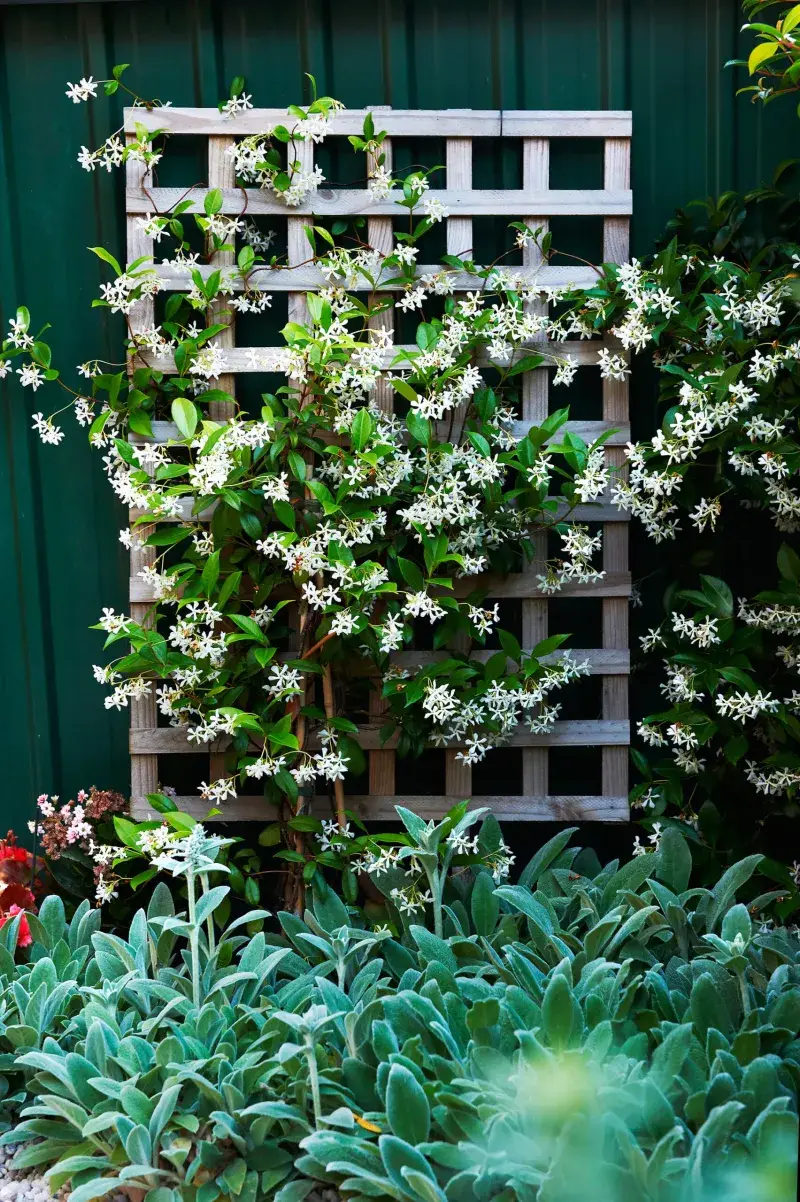
Opt for non-invasive climbing plants to enjoy vertical gardening without the worry of overgrowth. These plants offer vibrant blooms and foliage that enhance garden spaces while respecting boundaries. Unlike more aggressive climbers, non-invasive varieties won’t damage structures or require constant pruning. Choose these plants for trellises, walls, or fences to add vertical interest and visual appeal. Their manageable growth and charming appearance make them a delightful choice for gardeners seeking beauty and simplicity.
Wildflower Mix
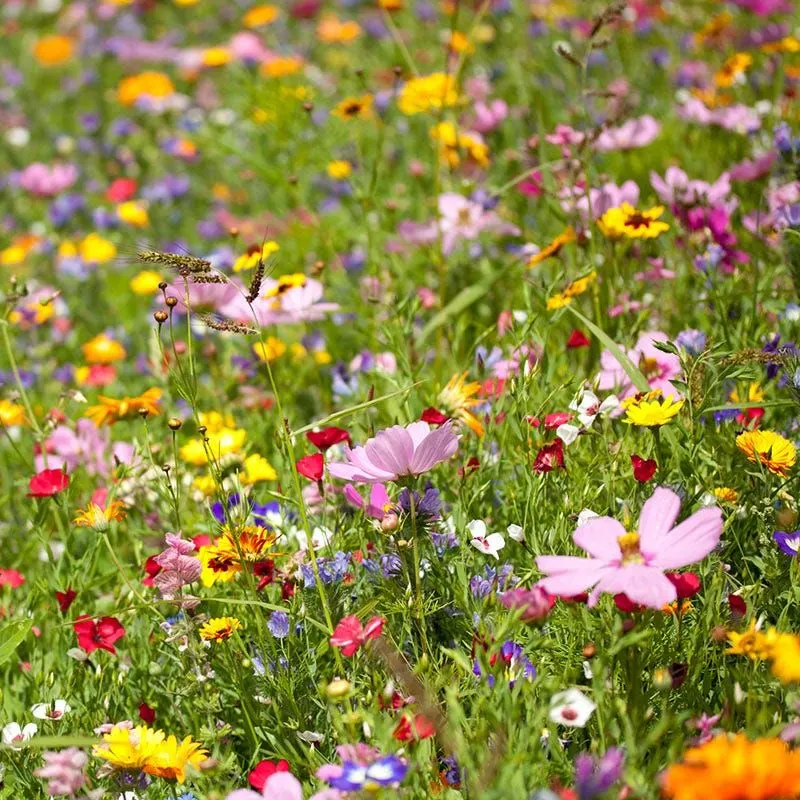
Create a vibrant and eco-friendly garden with a wildflower mix. These flowers provide an alternative to invasive species like purple loosestrife, offering color and life to any space. Wildflowers support pollinators and wildlife, requiring minimal care while thriving in local conditions. Planting a wildflower mix transforms gardens into dynamic landscapes filled with movement and diversity. Opt for wildflowers to enjoy a tapestry of colors that change with the seasons, enriching both the garden and the local ecosystem.
Pollinator-Friendly Plants
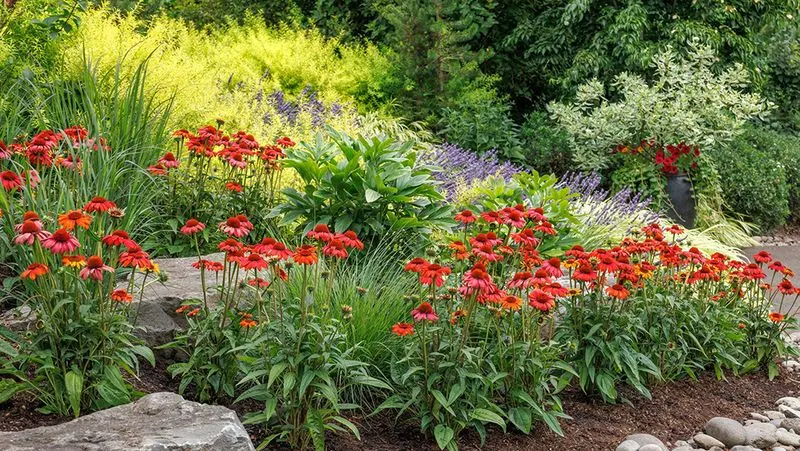
Enhance your garden’s allure with pollinator-friendly plants. These plants attract bees, butterflies, and other beneficial insects, supporting biodiversity and boosting garden health. Unlike invasive plants like autumn olive, pollinator-friendly varieties contribute positively to the ecosystem. Choose these plants to create a garden that buzzes with life and offers vibrant blooms throughout the growing season. Their ecological benefits and captivating beauty make them a must-have for gardeners dedicated to sustainability and natural harmony.
Drought-Tolerant Natives

Choose drought-tolerant native plants for a garden that requires less water and maintenance. These plants are adapted to local conditions and offer an eco-friendly alternative to high-water-use species like eucalyptus. With their ability to thrive in arid environments, drought-tolerant natives provide color and interest without taxing water resources. Opt for these plants to create a sustainable and water-wise garden that reflects the beauty and resilience of the natural landscape. Their practicality and charm make them an excellent choice for conscientious gardeners.

